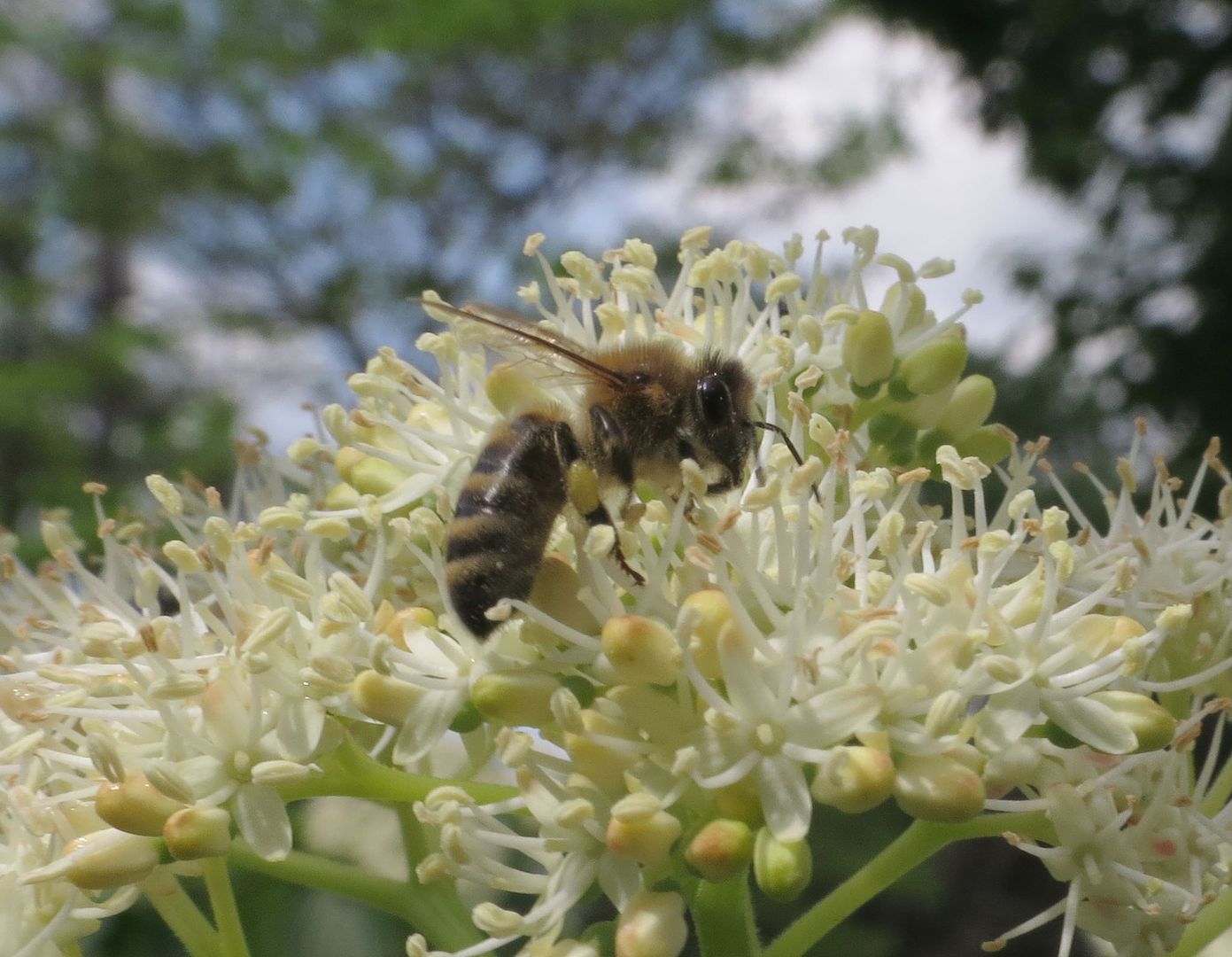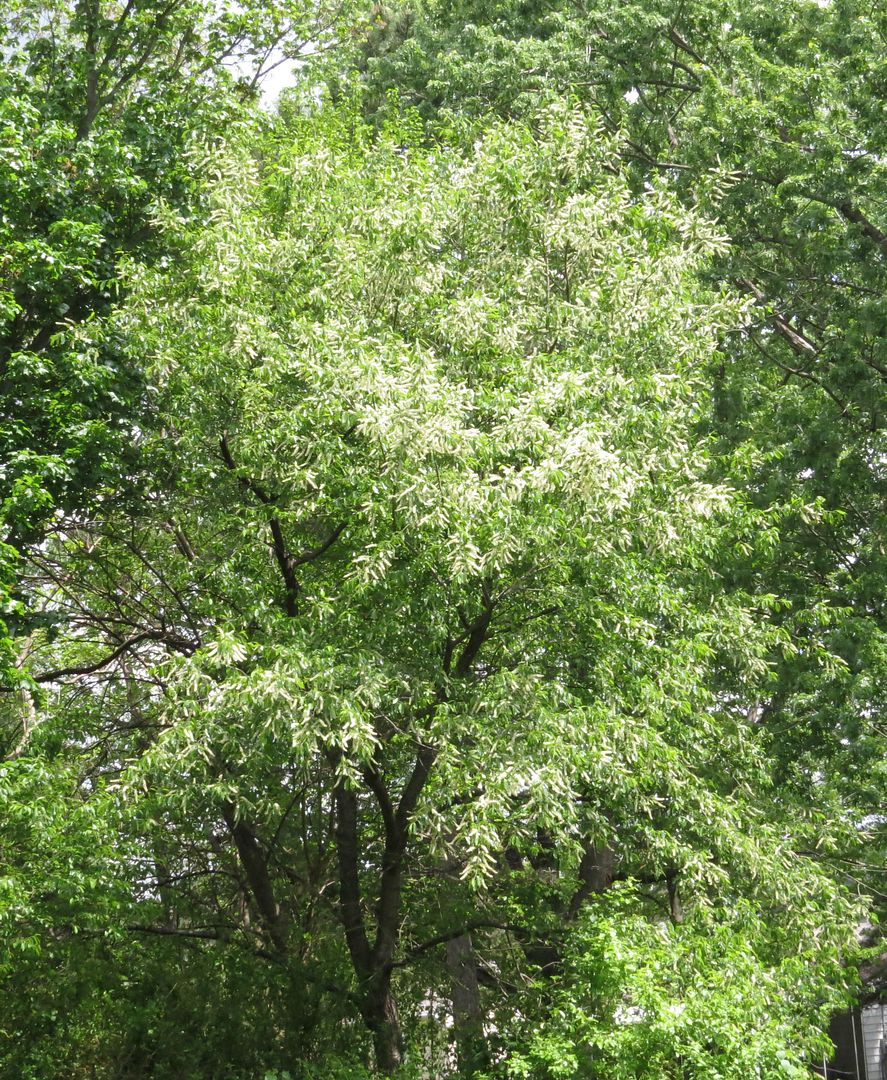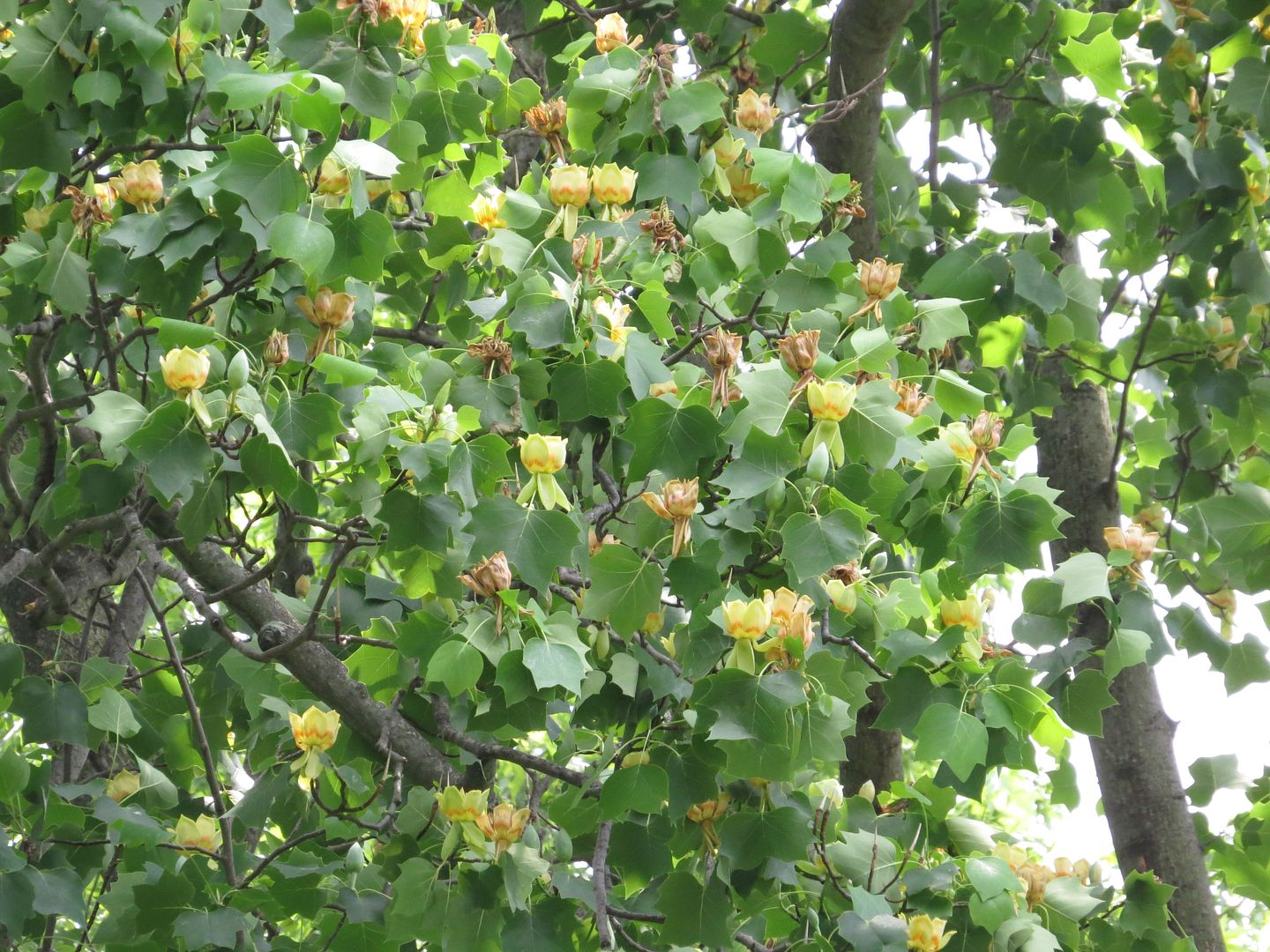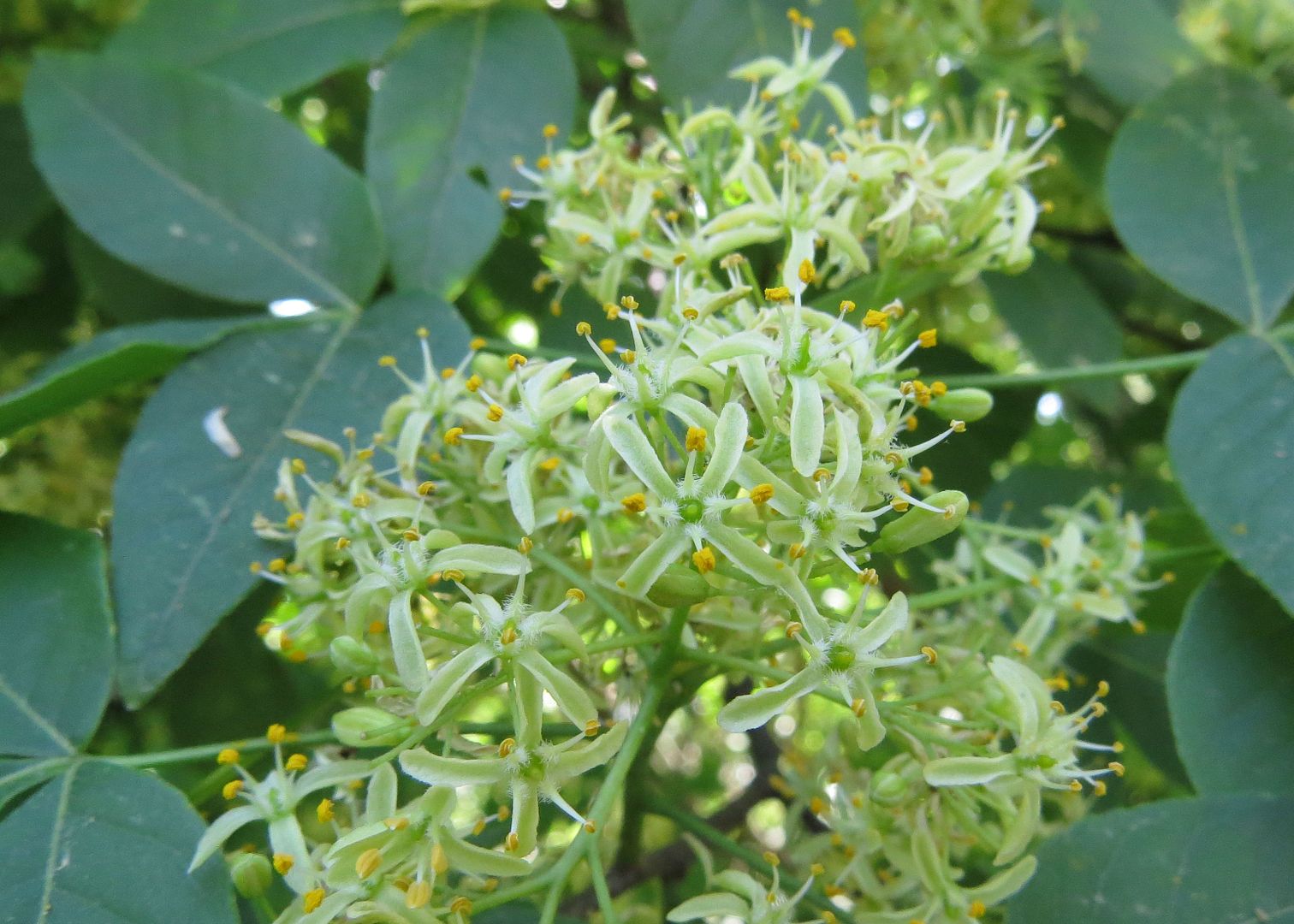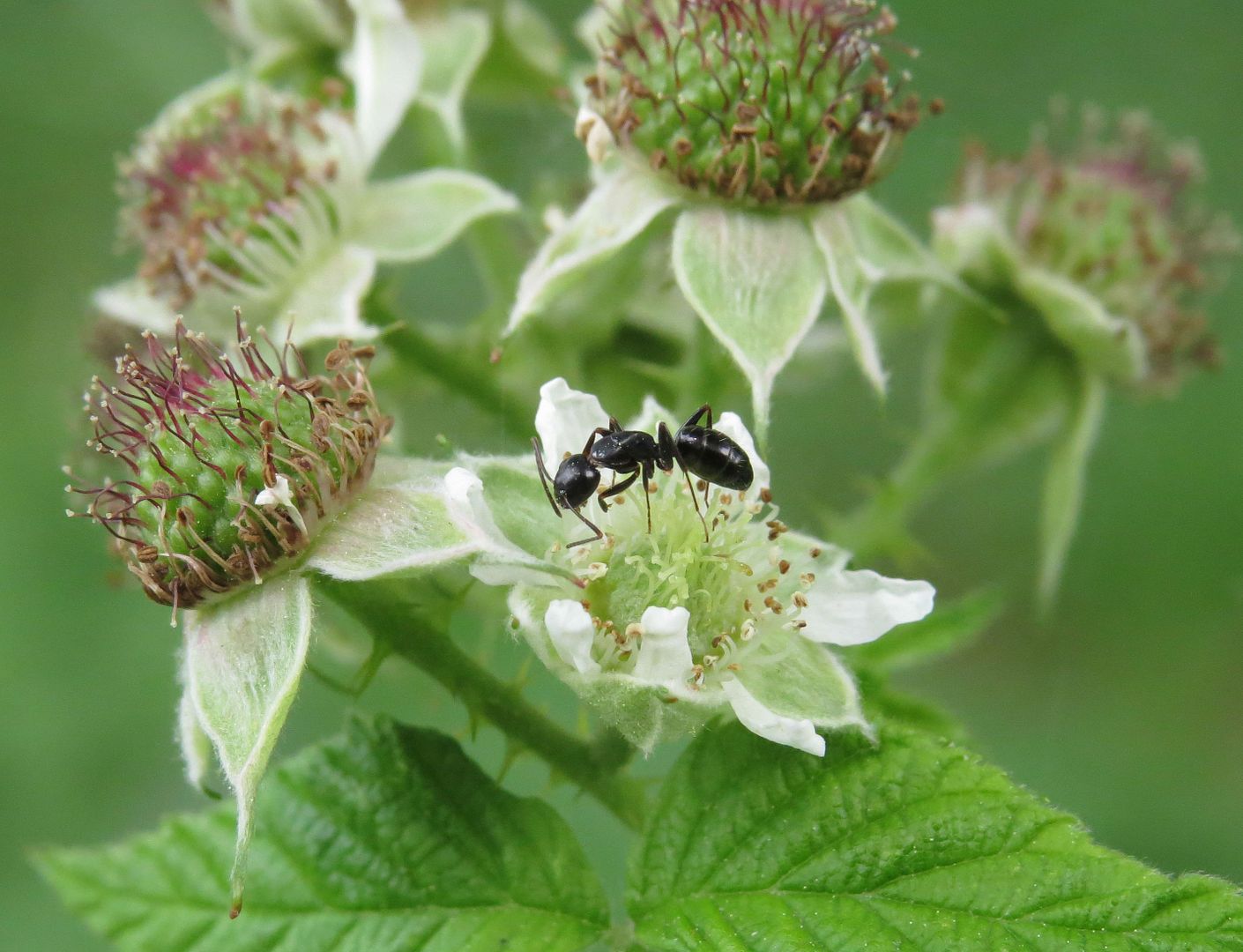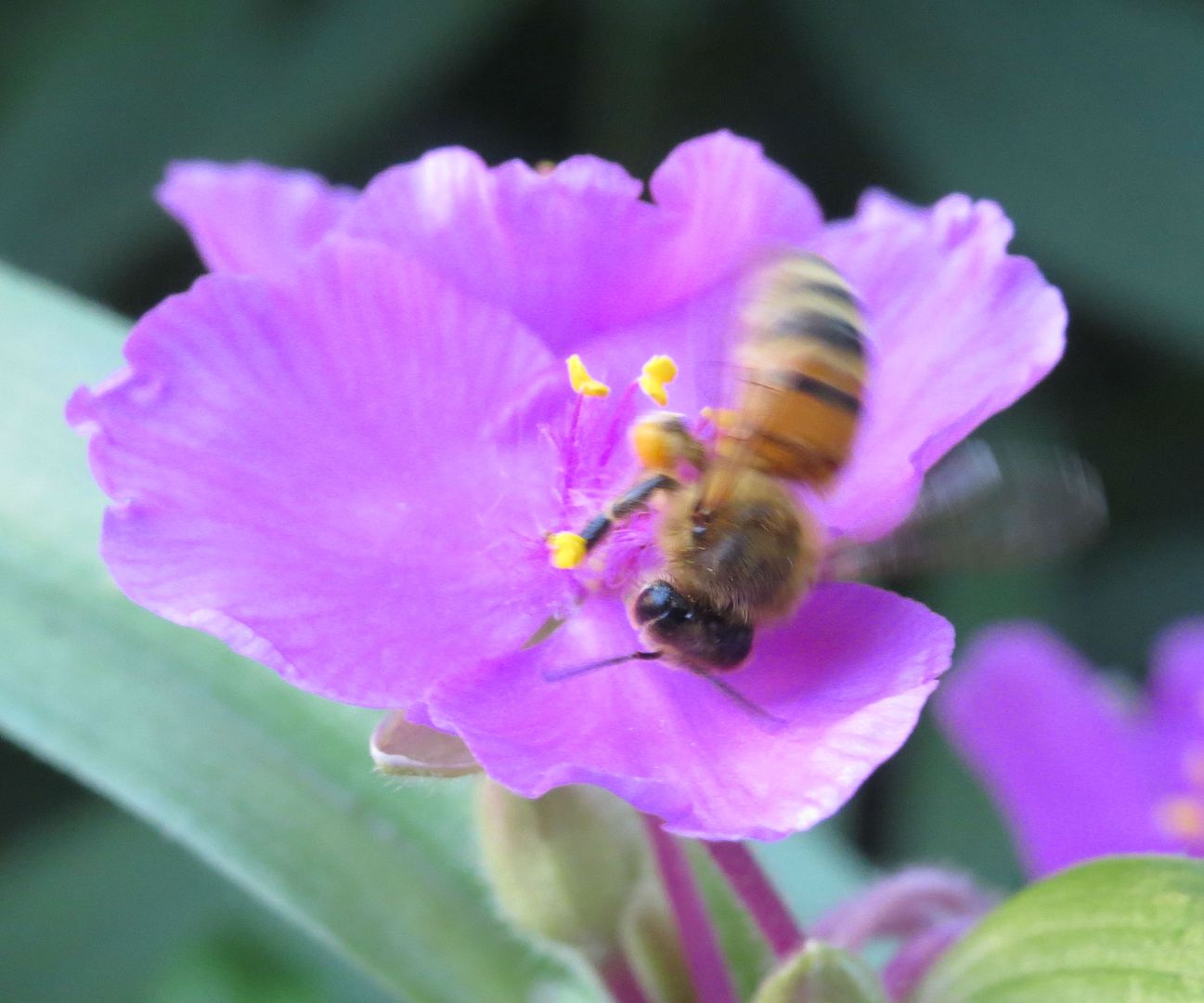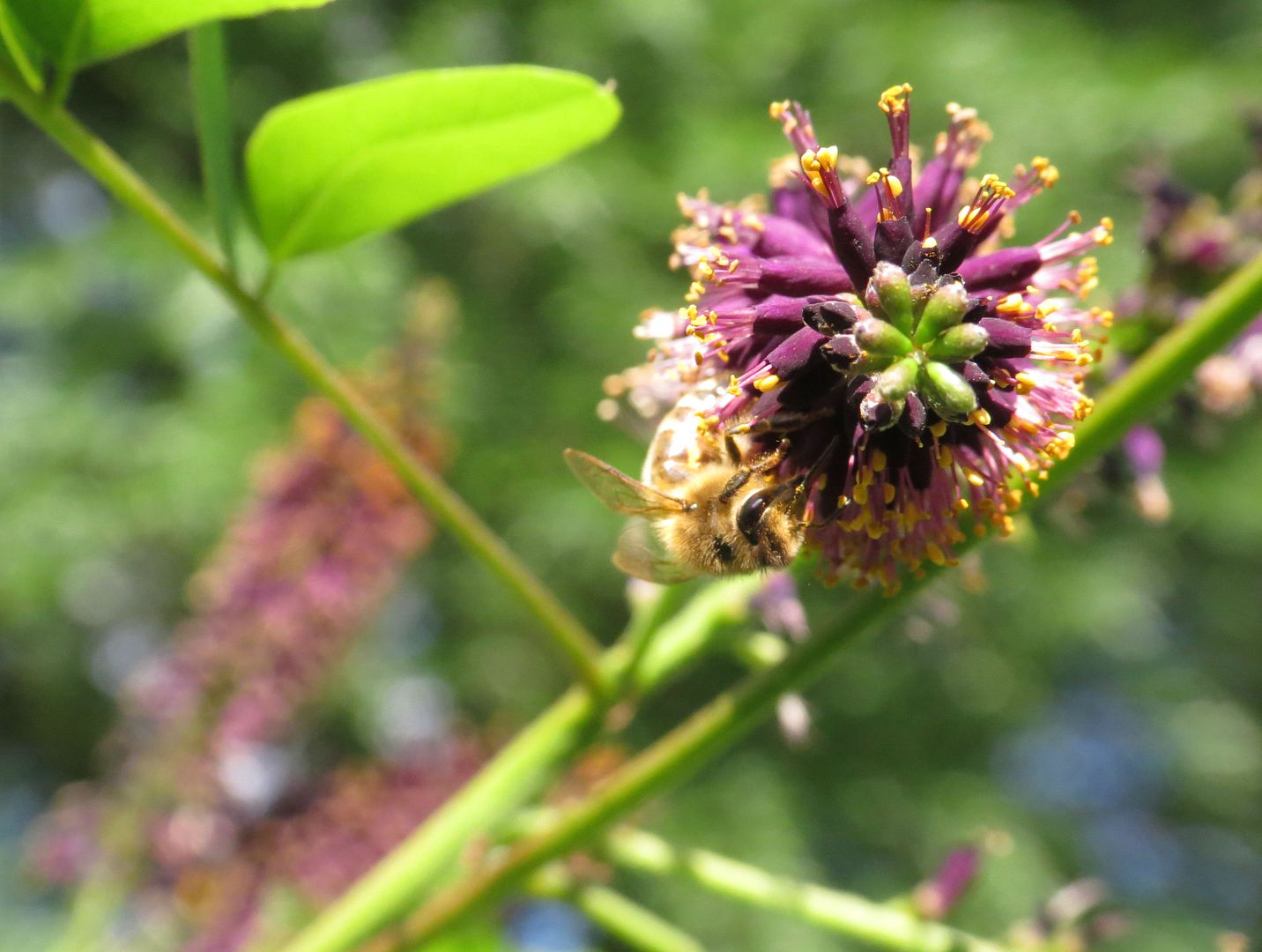About a month ago all the dogwoods were flowering, and while people are very familiar with the main two Cornus florida and Cornus kousa (not native) I've never really been impressed by the attention they get by bees. These are the big flowering dogwoods with the really big white "petals" which are actually bracks, modified leaves that are white or pink colored to act like flower petals. But unlike flower petals, they're able to produce chlorophyll to a degree where as true petals and rays do not.
Pictured above is the Alternate Leaf Dogwood, Cornus alternifolia. This species lacks the big showy white bracks of its cousin and instead easily produces ten times more flowers! This makes them extremely popular with pollinators, and honeybees are no exception. One failing though is I believe the plant is only used for pollen (or otherwise produces an insignificant amount of nectar for bees to bother with) but it's certainly a powerhouse at doing so. Growers will be impressed with the flowering display of saplings and every year they become more and more showy.
Other dogwoods, such as the Red Twig Dogwood, Cornus sericea, take on more of a shrub habit. They have similar flower displays to C. alternifolia but nowhere near the amount of flowers, and thus have to grow considerably larger to get the same pollinator attention.
White Dutch Clover, Trifolium repens, this is a common lawn "weed" that I'm all for planting. It's hard to remain a native plant purest with a plant that spices up the nonnative American lawn. You can buy seeds to this plant by the pound which have about a 40% success rate when seeded into an established lawn. Plants produce their own fertilizer too and are fairly hardy. Even with large patches of this plant in bloom though you only see a hand full of bees even bothering with them. What makes them so successful as a nectar plant though is the fact that almost every lawn has them.
Black Cherry, Prunus serotina. Truth be told, this isn't a very popular plant with any pollinators, but it's bloom time, along with other cherry/plums, fills a gap between a few others. It's also a host plant for the Tiger Swallowtail Butterfly, the berries are edible though perhaps better used for pies and jam making, or left to the birds as it's one of the earliest to ripen.
Tulip Tree, Liriodendron tulipifera. Not to be confused with Magnolias, this is one of the fastest growing and tallest trees in the forest. A dozen or so honeybees can work a single flower at a time, though it's not every year that it's flowers are prized. As odd as it sounds, honeybees will only work this tree intensely on years when the blooming is later than usual but also preceded by a rain storm. Rain causes most trees to produce three times as much nectar so on wet years a hive will produce a lot more honey. This tree is also a host plant for Tiger Swallowtails, so it's well worth planting if you've got the space.
Hop Tree, Ptelea trifoliata. This tree has become somewhat uncommon which is a shame because bees go nuts for it. The foliage superficially resembles poison ivy, and can have a displeasing odor when disturbed. They can grow in full shade or full sun, but of course flower best in full sun. Also I've noticed that bees only work the flowers that are in full sun, often high up in the tree. (I would have gotten pictures of honeybees on this one but this isn't my tree and I didn't have a ladder accessible.) Another trait one might be on the fence about; this is the host plant to the Giant Swallowtail Butterfly, which is the largest butterfly in North America. The caterpillars mimic bird droppings and have been known to completely defoliate whole shrubs and trees of this plant! So gardeners need to choose between a good nectar plant (assuming it's in full sun) or living with flocks of the largest butterfly in North America flying through their yard.
Okay that's an ant, not a bee, but even they like to steal the nectar from some of these plants. Members of the Ribes genus are high up on the pollinator list. Red Raspberries in particular are beloved by honeybees but only when allowed to grow into a nice sized patch. Blackberries get a silver medal, maybe bronze compared to the classic Red Raspberries but are still worth growing.
Spiderwort, Tradescantia sp., these only open in the daylight hours, and are usually closed by 4:00pm. Honeybees work them, usually before noon time when the pollen is fresh. Patches of this plant need to be at least two feet around in order for honeybees to bother with them though. I planted a few dozen plants three years ago and it's taken that long for them to even take notice. Thankfully spiderwort is one of those care free natives that grows, spreads, and goes dormant with almost no maintenance or care.
Black Locust is another one that's flowering now. It's a medium sized tree with chains of white, wisteria-like flowers on it. I've been unable to find time to get pictures of it so far. The same goes for Catalpa Trees which are also flowering, and have great big white trumpets for blooms.
False Indigo Shrub, Amorpha fruicosa, this is another one that's not often planted. The flowers are fragrant, plum colored with bright orange pollen, and appear similar to Butterfly Bush, but better smelling and with an open habit.
This is another nitrogen fixing plants that produces its own fertilizer. It produces part shade beneath it too so you can grow it fairly close to a vegetable garden with little impact on the crops below.
It's also a host plant for the Silver Stripe Skipper, the largest of the skippers of North America. Unlike other supposed host plants of that butterfly, I've actually found the caterpillars on the plant!
And a reminder that I wrote a book titled "Native Plants for Honeybees" last year on that topic. Word of warning, it's self published, and thus not on the best quality of paper. I encourage you to give the free preview a try before commuting to purchase. Reading through some of the negative reviews I see not everyone thinks my opinion on plants was worth their time, also one seemed against self published in general.
